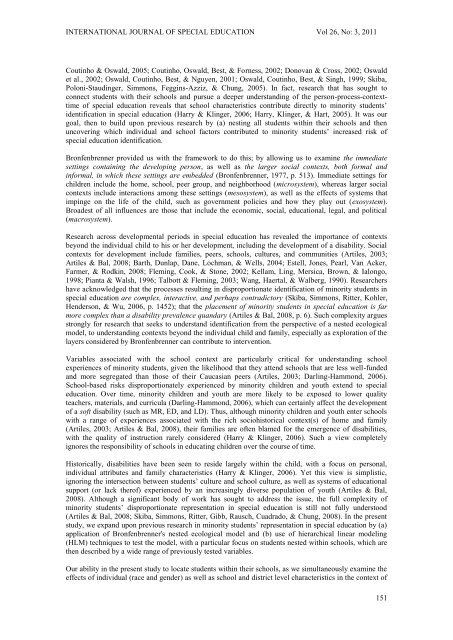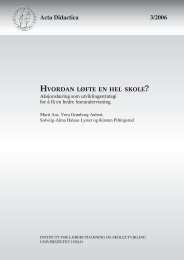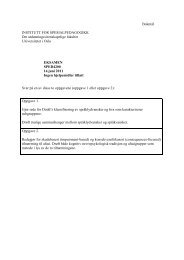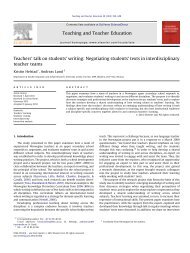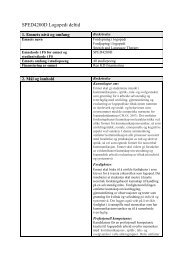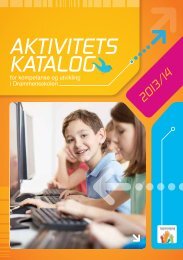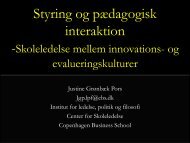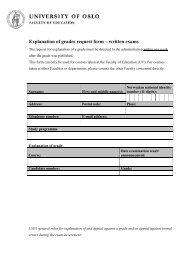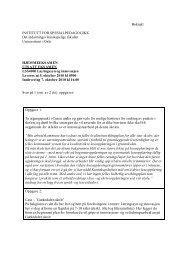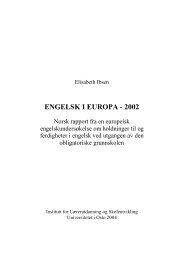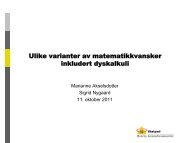International Journal Special Education
International Journal Special Education
International Journal Special Education
Create successful ePaper yourself
Turn your PDF publications into a flip-book with our unique Google optimized e-Paper software.
INTERNATIONAL JOURNAL OF SPECIAL EDUCATION Vol 26, No: 3, 2011Coutinho & Oswald, 2005; Coutinho, Oswald, Best, & Forness, 2002; Donovan & Cross, 2002; Oswaldet al., 2002; Oswald, Coutinho, Best, & Nguyen, 2001; Oswald, Coutinho, Best, & Singh, 1999; Skiba,Poloni-Staudinger, Simmons, Feggins-Azziz, & Chung, 2005). In fact, research that has sought toconnect students with their schools and pursue a deeper understanding of the person-process-contexttimeof special education reveals that school characteristics contribute directly to minority students’identification in special education (Harry & Klinger, 2006; Harry, Klinger, & Hart, 2005). It was ourgoal, then to build upon previous research by (a) nesting all students within their schools and thenuncovering which individual and school factors contributed to minority students’ increased risk ofspecial education identification.Bronfenbrenner provided us with the framework to do this; by allowing us to examine the immediatesettings containing the developing person, as well as the larger social contexts, both formal andinformal, in which these settings are embedded (Bronfenbrenner, 1977, p. 513). Immediate settings forchildren include the home, school, peer group, and neighborhood (microsystem), whereas larger socialcontexts include interactions among these settings (mesosystem), as well as the effects of systems thatimpinge on the life of the child, such as government policies and how they play out (exosystem).Broadest of all influences are those that include the economic, social, educational, legal, and political(macrosystem).Research across developmental periods in special education has revealed the importance of contextsbeyond the individual child to his or her development, including the development of a disability. Socialcontexts for development include families, peers, schools, cultures, and communities (Artiles, 2003;Artiles & Bal, 2008; Barth, Dunlap, Dane, Lochman, & Wells, 2004; Estell, Jones, Pearl, Van Acker,Farmer, & Rodkin, 2008; Fleming, Cook, & Stone, 2002; Kellam, Ling, Mersica, Brown, & Ialongo,1998; Pianta & Walsh, 1996; Talbott & Fleming, 2003; Wang, Haertal, & Walberg, 1990). Researchershave acknowledged that the processes resulting in disproportionate identification of minority students inspecial education are complex, interactive, and perhaps contradictory (Skiba, Simmons, Ritter, Kohler,Henderson, & Wu, 2006, p. 1452); that the placement of minority students in special education is farmore complex than a disability prevalence quandary (Artiles & Bal, 2008, p. 6). Such complexity arguesstrongly for research that seeks to understand identification from the perspective of a nested ecologicalmodel, to understanding contexts beyond the individual child and family, especially as exploration of thelayers considered by Bronfenbrenner can contribute to intervention.Variables associated with the school context are particularly critical for understanding schoolexperiences of minority students, given the likelihood that they attend schools that are less well-fundedand more segregated than those of their Caucasian peers (Artiles, 2003; Darling-Hammond, 2006).School-based risks disproportionately experienced by minority children and youth extend to specialeducation. Over time, minority children and youth are more likely to be exposed to lower qualityteachers, materials, and curricula (Darling-Hammond, 2006), which can certainly affect the developmentof a soft disability (such as MR, ED, and LD). Thus, although minority children and youth enter schoolswith a range of experiences associated with the rich sociohistorical context(s) of home and family(Artiles, 2003; Artiles & Bal, 2008), their families are often blamed for the emergence of disabilities,with the quality of instruction rarely considered (Harry & Klinger, 2006). Such a view completelyignores the responsibility of schools in educating children over the course of time.Historically, disabilities have been seen to reside largely within the child, with a focus on personal,individual attributes and family characteristics (Harry & Klinger, 2006). Yet this view is simplistic,ignoring the intersection between students’ culture and school culture, as well as systems of educationalsupport (or lack therof) experienced by an increasingly diverse population of youth (Artiles & Bal,2008). Although a significant body of work has sought to address the issue, the full complexity ofminority students’ disproportionate representation in special education is still not fully understood(Artiles & Bal, 2008; Skiba, Simmons, Ritter, Gibb, Rausch, Cuadrado, & Chung, 2008). In the presentstudy, we expand upon previous research in minority students’ representation in special education by (a)application of Bronfenbrenner's nested ecological model and (b) use of hierarchical linear modeling(HLM) techniques to test the model, with a particular focus on students nested within schools, which arethen described by a wide range of previously tested variables.Our ability in the present study to locate students within their schools, as we simultaneously examine theeffects of individual (race and gender) as well as school and district level characteristics in the context of151


